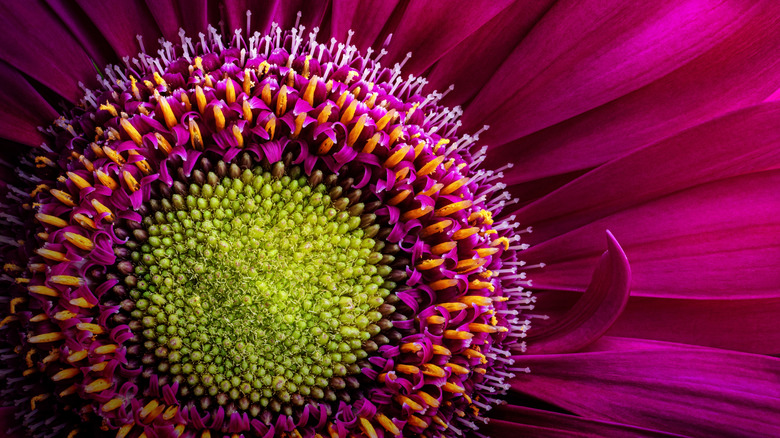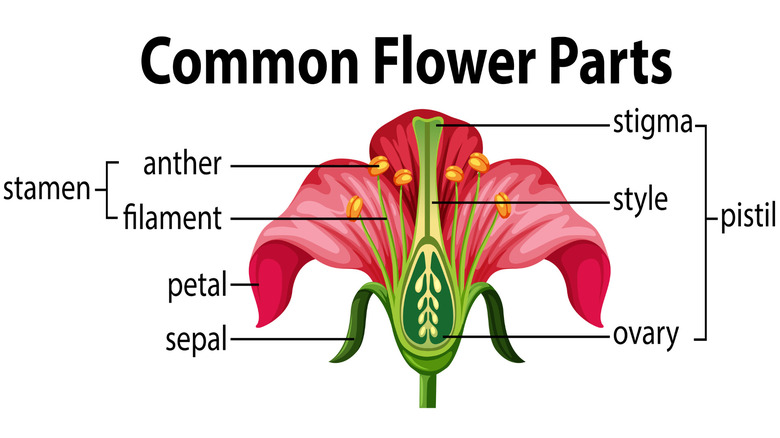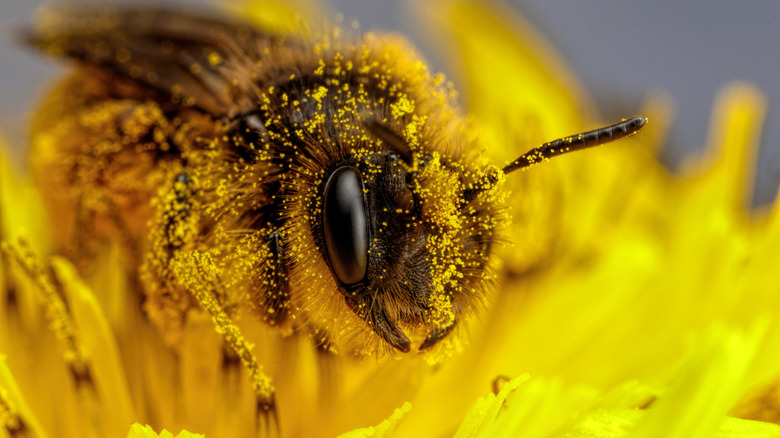Diagram Of The Parts Of A Flower
Flowers are some of the most attention-grabbing things in the natural world. Their brilliant colors and unique petals have influenced human cultures for millennia and continue to do so today. But flowers are far more than just nature's decorations — they are the reproductive structures of angiosperms (flowering plants) and play a crucial role in supporting whole ecosystems with the petals, pollen, and nectar that they produce. Birds, beetles, bats, and bees are just some of the animals that rely on flowers to survive. In short, despite their delicate appearance, flowers do a lot of heavy lifting in the natural world, which is why it's difficult to deny the importance of flowers in nature.
Each part of a flower is specialized to perform specific functions that facilitate reproduction. The petals, often brightly colored and sometimes fragrant, serve to attract pollinators like butterflies. Sepals, typically green and leaf-like, are the protective covering that keeps the flower bud safe before and as it opens. The male reproductive organs, known collectively as stamen, consist of two smaller parts that produce pollen and help pass that pollen to the female reproductive organ, which is known as the pistil.
Understanding the structure and function of these floral parts provides some fascinating insight into the complex processes of pollination and fertilization in a living species that is markedly different than our own. Not only are flowers essential for the continuation of plant species and the production of crops that humans rely on, but learning about them can remind us how nature comes up with a dazzling variety of ways to accomplish the same task. Let's take an in-depth look at how it all works.
Flower structure: key components and their functions
Sepals are typically the green, leaf-like structures that form the outermost part of the flower. They encase and protect the developing bud from environmental factors and pests before it blooms. In some species, sepals are brightly colored and resemble petals, contributing to a flower's overall appearance. Petals are often the most visually striking part of the flower, designed to attract pollinators like bees, butterflies, and birds. Their bright colors and distinct shapes (and sometimes, their fragrances), serve as lures that guide these pollinators to the flower's reproductive structures. Insects don't see the world like humans do, and some flowers even have ultraviolet markings on them that pollinators can detect, better leading them to the plant.
The stamen is the male reproductive part of the flower, and it consists of two main components: a filament and an anther. The filament is simply a stalk-like object that supports the anther, which produces and releases pollen, the substance that contains the flower's male gametes (reproductive cells). In most flowers, you will see more than one stamen present, an evolutionary tactic to increase the chances of fertilization.
The pistil is the elongated central structure around which the stamens orient themselves. It contains the seed-generating ovary and is made up of three parts. The stigma is the top of the pistil. This part of the plant is sticky to secure any pollen that drifts by or rubs up against it (like when a bee brushes by). The slender middle section of the pistil is called a style, and at its bottom, inside the pistil, sits the ovary. Here, you'll find the ovules, the plant's female sex cells.
How flowers reproduce
Beyond being visually striking, flowers are finely tuned reproductive structures that have evolved to ensure the survival of their species. The process begins with pollination, a mechanism that transfers pollen from the stamen to the pistil, the result of which is the creation of seeds that carry on the plant's genetic lineage.
Pollination can happen through different means. Some plants rely on insects, birds, bats, or even wind to move the pollen between flowers with only male organs and flowers with only female organs (though many flowers contain both, making fertilization easier). Amazingly, some pollinators like bumblebees actually grab onto a flower's anthers and violently flap their wings, causing the structure to release thousands of pollen grains at a time (check out our guide to how flowers and bees help each other, if you want to know even more). Following fertilization, the flower's ovary begins transforming into a fruit, the structure designed to protect, disperse, and even nourish the seeds.
Different plants bloom at different times of the year (even certain types of plants in the tundra biome can bloom). This ensures that pollinators have a steady food source throughout the seasons and decreases competition between the various animals that act as vectors for the flower's reproductive material. All told, this complex yet efficient fertilization cycle ensures that flowering plants continue to thrive across the planet, supporting vast ecosystems and sustaining agriculture alike.


